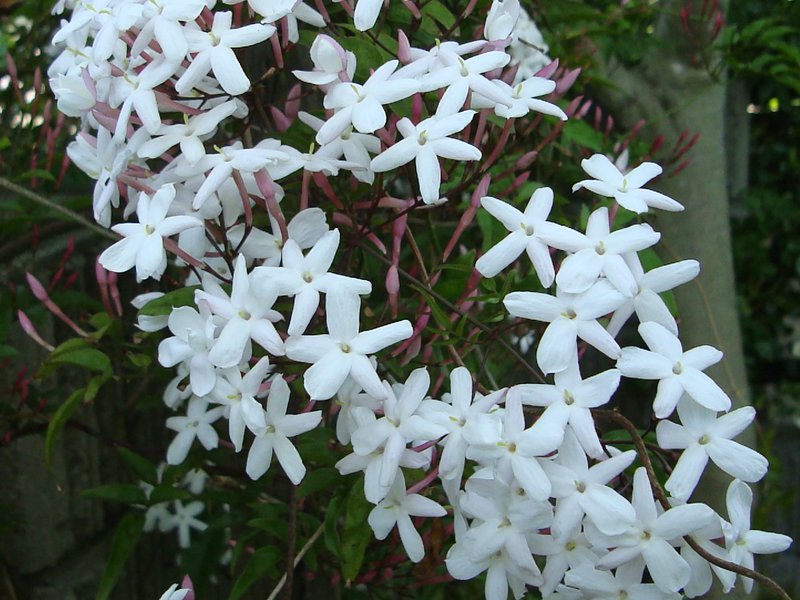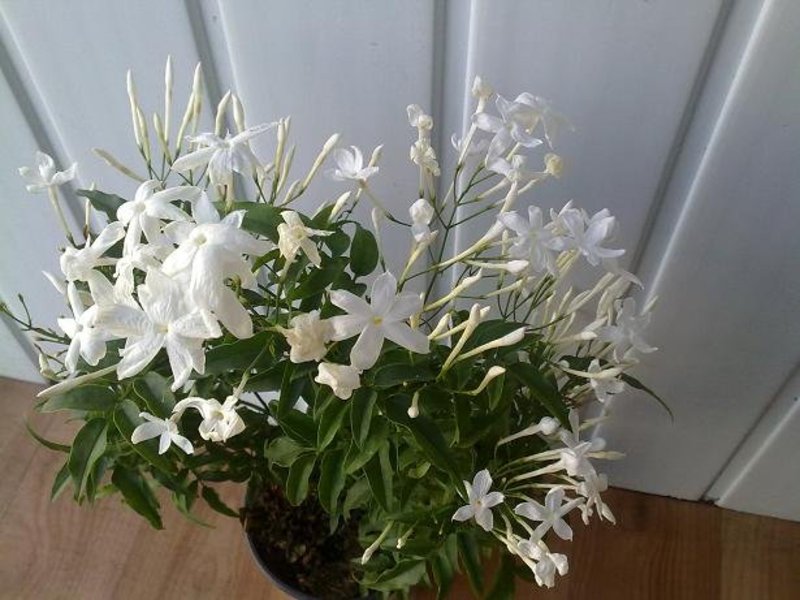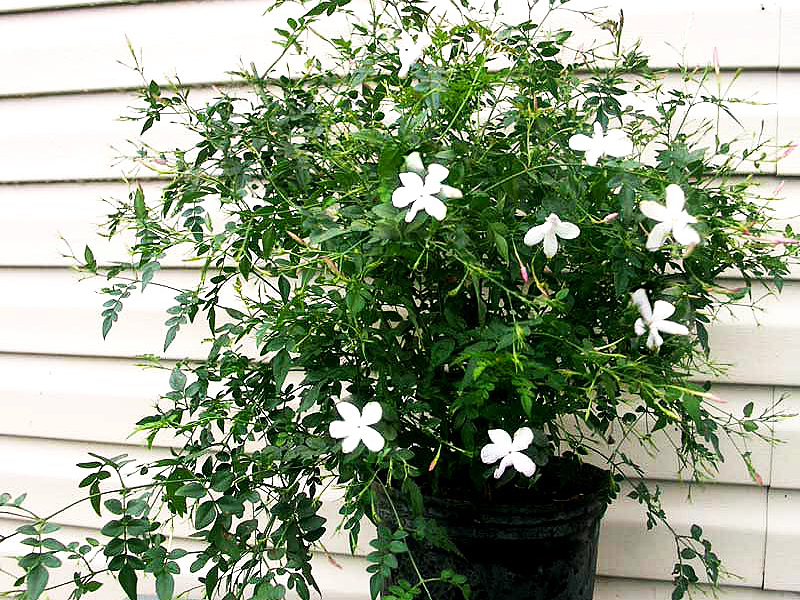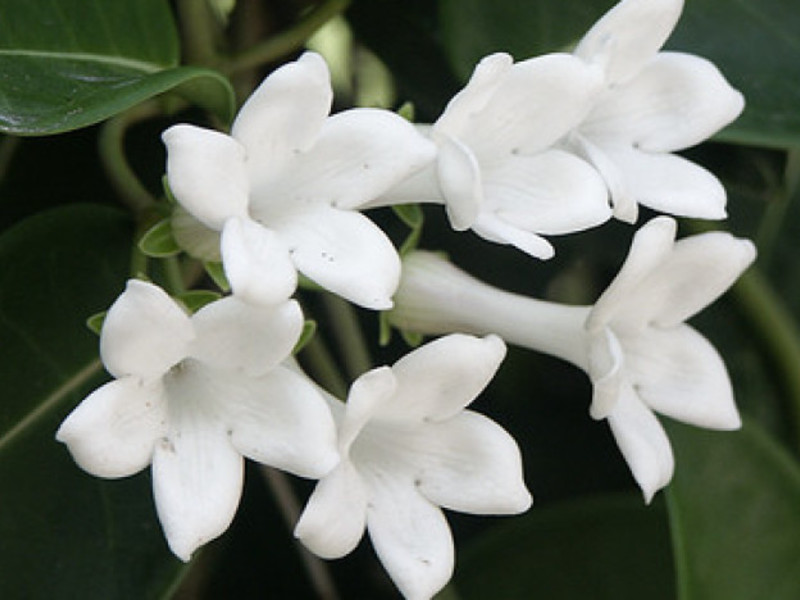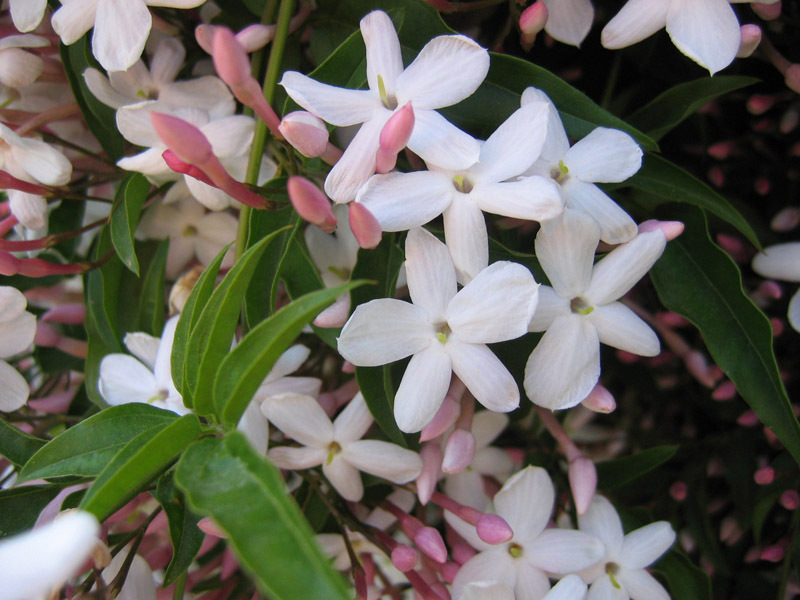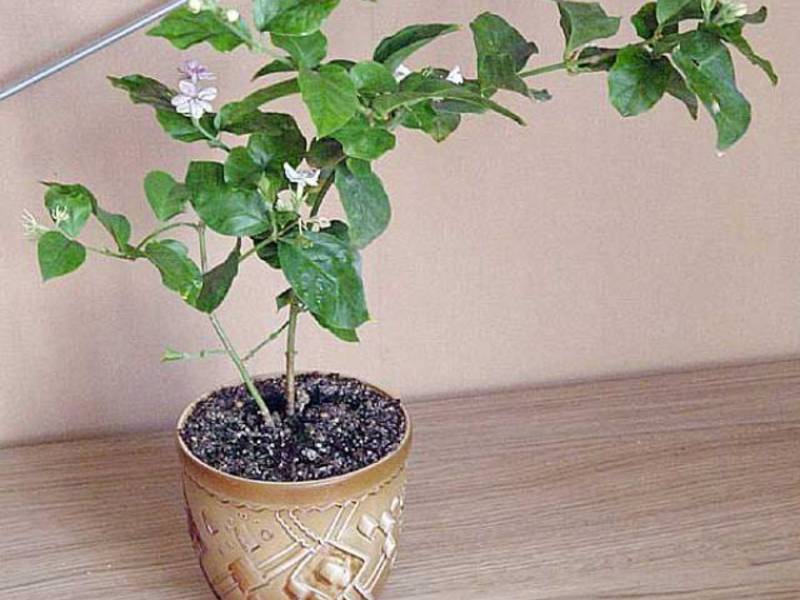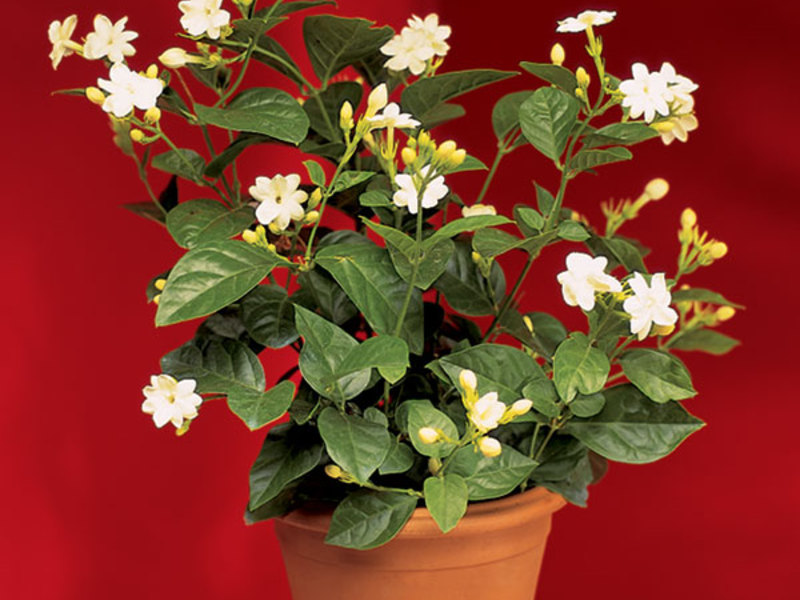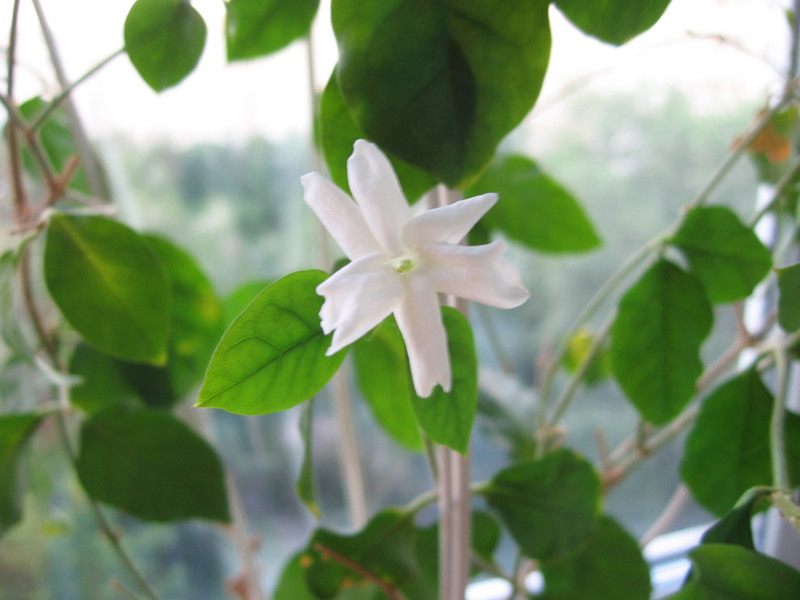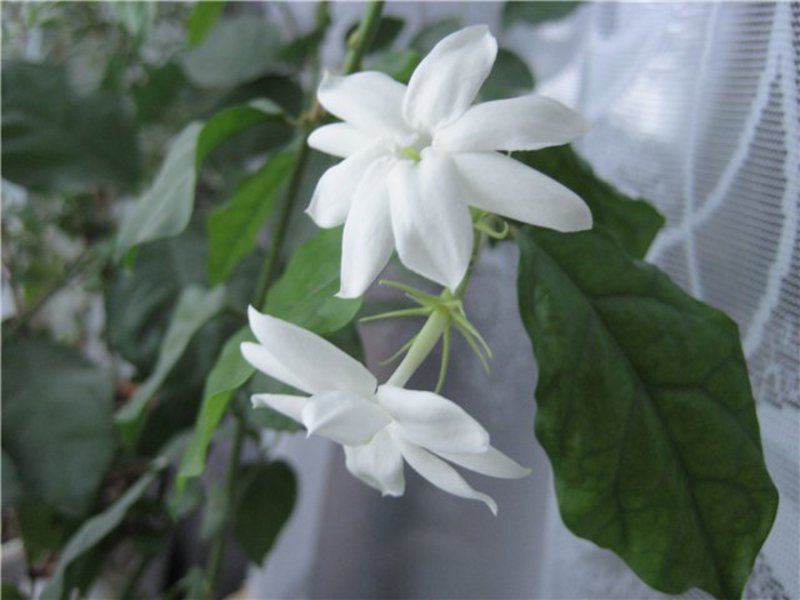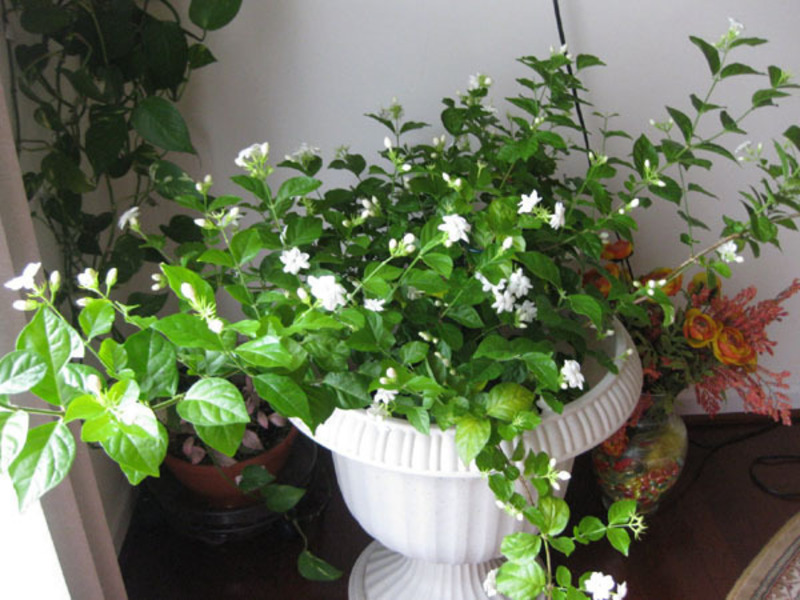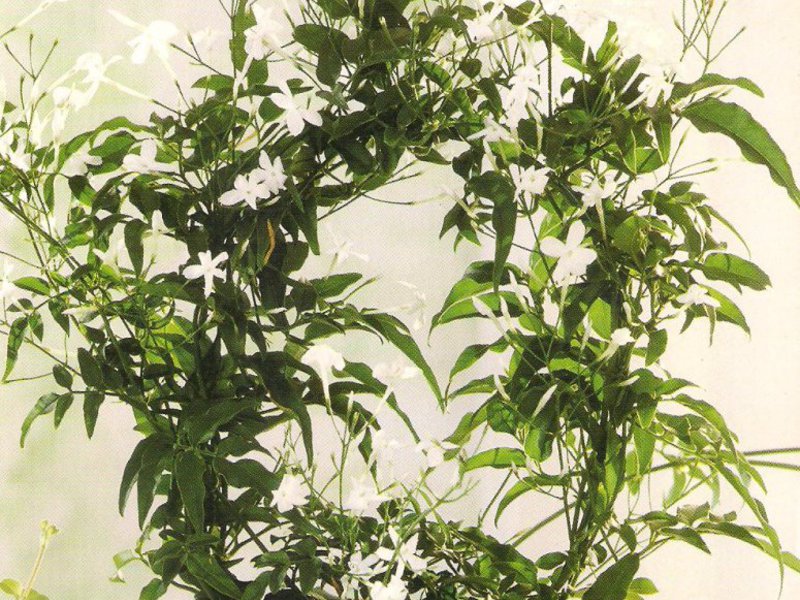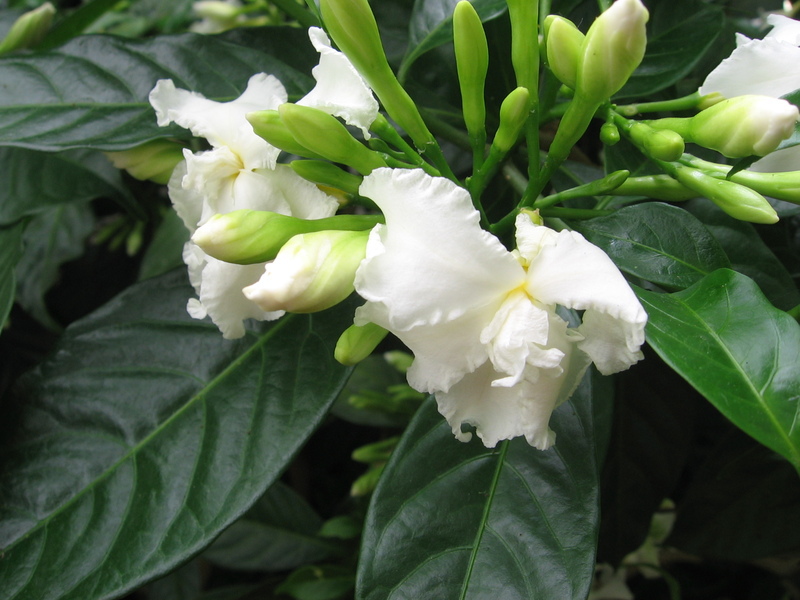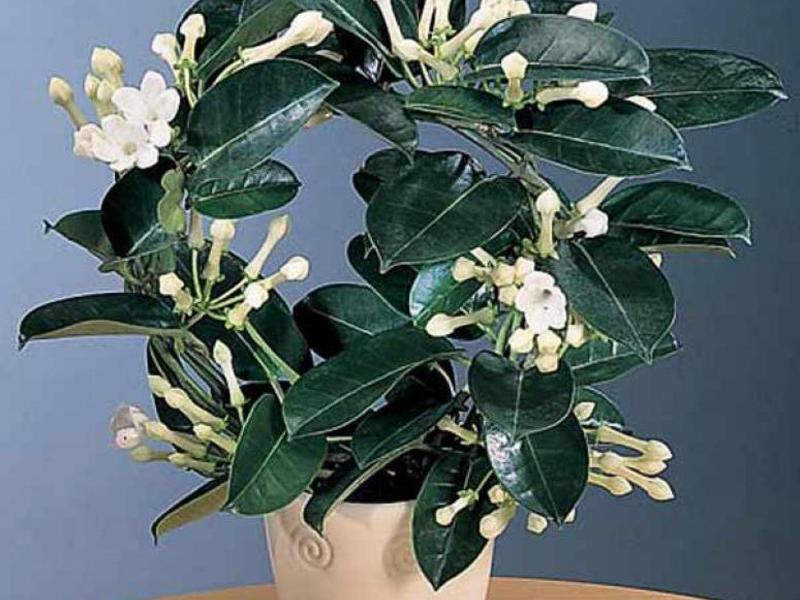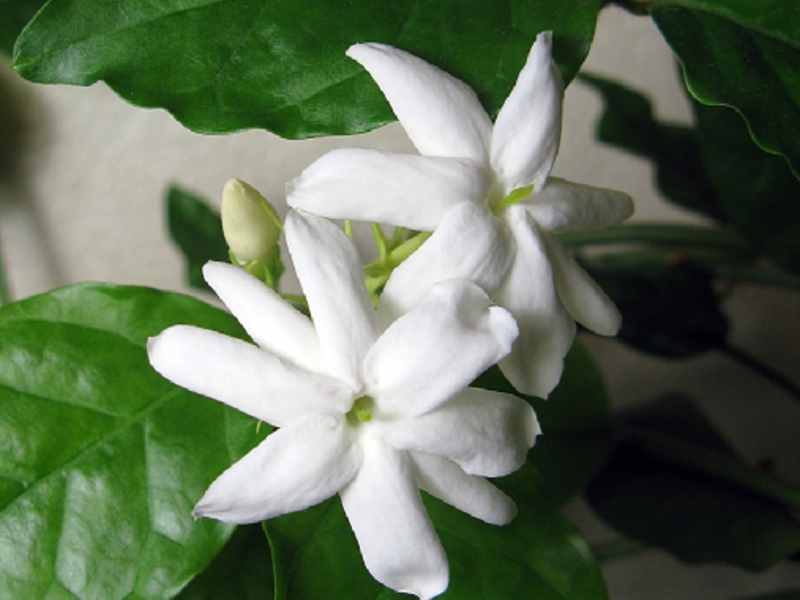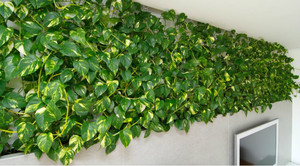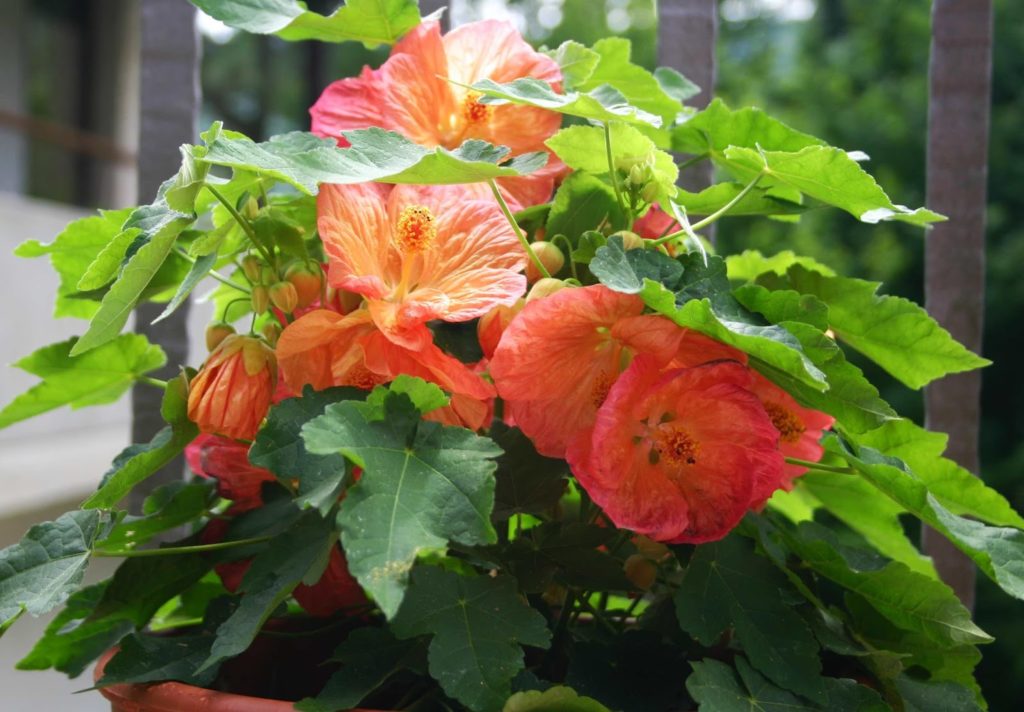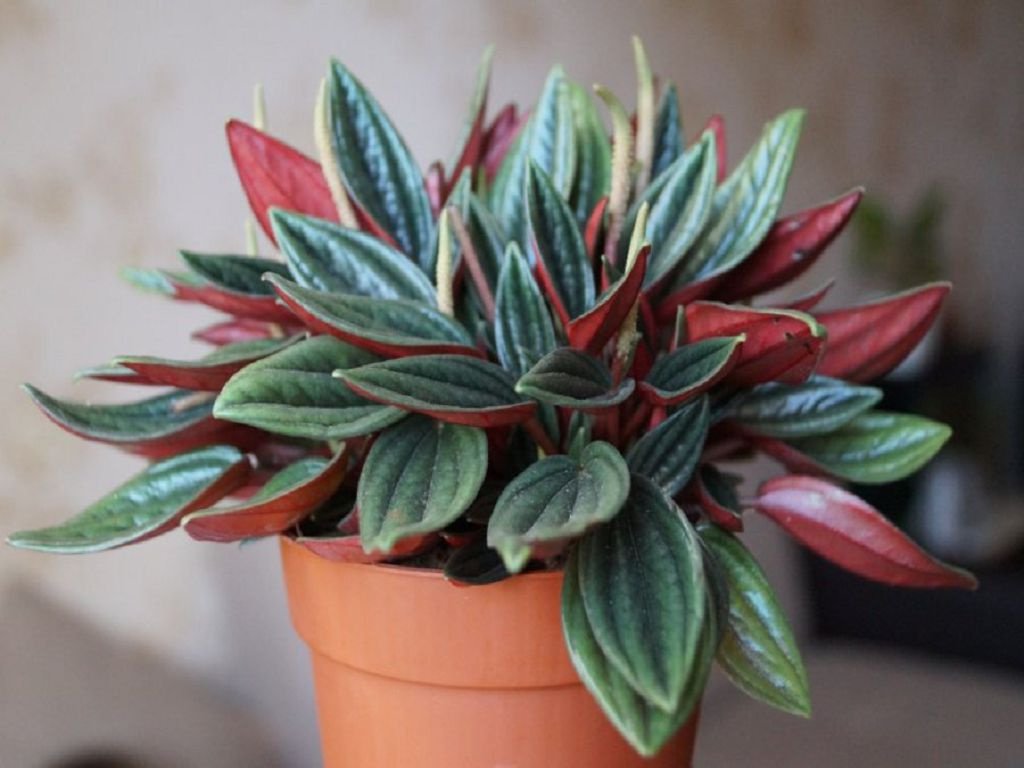All summer, and even in winter, it blooms with white star-shaped flowers. jasmine plant... It is a liana or shrub on which flowers can grow both on the sides and at the top. Jasmine is often confused with chubushnik. But these plants belong to different families. Only smell connects them. There are about 190 species of jasmine. Some of them can be grown in winter gardens and indoor conditions.
Content
Photos, varieties and description of jasmine
The plant is both evergreen and shedding foliage bushes or vines... Unpaired or trifoliate leathery leaves can grow both in turn and opposite each other. The flowers grow one at a time, gather in shields or umbrellas. The saucer-shaped corolla with a cylindrical tube can be white, yellow, and sometimes pink. The lower part of the jasmine stem will lignify over time, and its upper thin branches need support.
Jasmine species
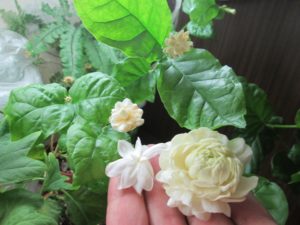 Jasmine is the finest or multi-flowered - the plant is an evergreen shrub or pubescent liana native to the northern region of Kalimantan. On thin shoots, lanceolate-oval simple leaves grow, which in length reach 3.5 cm... At the base, the leaves are heart-shaped, and at the top they are pointed. It blooms from January to March with large, white, fragrant flowers.
Jasmine is the finest or multi-flowered - the plant is an evergreen shrub or pubescent liana native to the northern region of Kalimantan. On thin shoots, lanceolate-oval simple leaves grow, which in length reach 3.5 cm... At the base, the leaves are heart-shaped, and at the top they are pointed. It blooms from January to March with large, white, fragrant flowers.
Jasmine Sambac (photo) is the national flower of Indonesia, native to Tropical Asia. Growing up to 4-6 m liana has thin, pubescent shoots and opposite, ovoid leaves. Blunt or pointed at the apex; at the base, they are often rounded. White simple, semi-double or double flowers are collected in an umbrella-like manner. Blooms profusely from March to October. Fragrant jasmine sambac flowers can be added to tea, giving it a unique taste. Most often used as a houseplant.
Jasmine folded - the plant is distinguished by multi-flowered inflorescences, which are collected from flowers with a diameter of 2.5 cm. Egg-shaped leaves grow up to 6 cm, and grow in clusters of 5-7 pieces.
Jasmine is low - an evergreen shrub grows up to two meters in height. The trifoliate leaves grow up to 2.5 cm and can be ovoid or elliptical in shape. They are dark green above and light green below. On the inflorescence in the form of an umbrella, fragrant flowers with a yellow corolla are collected. Corolla tube and flower diameter - 1 cm. It blooms throughout the summer.
Multi-flowered jasmine - a shrub (photo) is distinguished by weakly branching shoots, reaching a height of up to two meters. Oval, dark green leaves are wavy at the edges, and pointed at the top. The pink flowers with a strong aroma have five lobes and grow on the tips of the shoots.
Jasmine officinalis - the plant is a perennial shrub with paired leaves growing on thin and smooth branches. The bottom of the plate is light green and the top is bright green. The leaves are lanceolate, pointed at the top and pubescent at the edges.Fragrant white flowers bloom on umbrella-shaped inflorescences in April.
Large-flowered jasmine is an evergreen shrub or liana that grows up to ten meters in length and has bare shoots. Large, white flowers gather in an umbrella-shaped inflorescence. The variegated elliptical leaves are pointed at the top and are 3 cm long. The first flowers on the shrub bloom in June. The flowering period is five months.
Jasmine - the shrub is distinguished by long, drooping, weakly branching shoots, on which very few leaves grow. At the same time, in winter, part of the leaves of jasmine holo-flowered drops. In the axils of the leaves along the entire stem are yellow flowers blooming from mid-winter to mid-spring.
Jasmine Bissa is an evergreen liana or shrub that grows up to two meters in length. The dark green simple leaves are ovoid or lanceolate. They are pubescent on both sides, grow up to 5 cm in length. The fragrant flowers of this type of jasmine are pink or dark pink in color. They reach 1.3-1.7 cm in diameter, and are located in two or three at the top of the shoots.
Growing and caring for indoor jasmine: photo
There should not be any special problems with the content of jasmine at home, since the plant is not capricious. However, some care features should be taken into account.
Lighting and air temperature
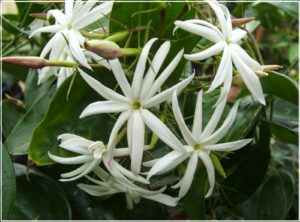 Homemade jasmine likes diffused bright light... For its cultivation, western and eastern window sills are suitable. If the flower stands near the south window, then it will need to be protected from direct sunlight. On the northern windows, due to lack of lighting, the plant grows slowly and practically does not bloom.
Homemade jasmine likes diffused bright light... For its cultivation, western and eastern window sills are suitable. If the flower stands near the south window, then it will need to be protected from direct sunlight. On the northern windows, due to lack of lighting, the plant grows slowly and practically does not bloom.
With the onset of warm days, the flower pot can be taken out to the loggia or garden. A place protected from wind and direct sunlight is chosen for it.
Jasmine is undemanding to air temperature. The optimum temperature for growing it is from 18 to 24 degrees... In order for the plant to bloom profusely and for a long time, it is recommended to keep it in a cool room with a temperature within 10 degrees during the winter period. Otherwise, the shrub will grow well with greenery, and the flowers will not appear. If the temperature at home in winter is too high, then it is recommended to regularly ventilate the room, protecting the plant from drafts.
Air humidity and watering
Jasmine needs high air humidity. When caring for a plant in indoor conditions there are three ways to increase humidity:
- Spray the bush every day with settled water at room temperature.
- Place the flower pot on a pallet with damp expanded clay, peat or moss.
- Install a humidifier.
If the shrub blooms, then it is not recommended to spray it. In winter, grown in cool conditions, jasmine does not need to be sprayed.
In spring, summer and autumn, the plant is regularly watered with settled water. Watering is done only after the topsoil dries out. A flower wintering in the coolness begins to water less in the fall, and in winter they just make sure that the earthy ball does not dry out. You cannot pour jasmine.
Transplant and fertilization
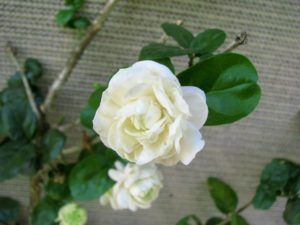 A flower brought from the store in a shipping container must be transplanted into a suitable pot. It is recommended to do this a couple of weeks after purchase, during which the plant must adapt to new conditions.
A flower brought from the store in a shipping container must be transplanted into a suitable pot. It is recommended to do this a couple of weeks after purchase, during which the plant must adapt to new conditions.
Transplant soil jasmine can be bought at the store by mixing it in the following proportions:
- mixture for flowering plants - part 3;
- mixture for azaleas - 1 part;
- sand - 1 part;
- a little vermiculite.
The result should be an acidic, loose soil. If possible, you can prepare the earthen mixture yourself. You need to mix:
- clay-sod land - 1 part;
- leafy ground - 1 part;
- sand - 1 part;
- peat - 1 part.
At the bottom of the pot, you must first pour a small layer of expanded clay, then some earth. A young plant is transplanted by transshipment so as not to disturb the roots. In this case, the shrub will take root faster and better. Around the plant planted in a pot, it spills out, the earth is tamped a little and watered.
The plant requires nutrients for lush flowering and good development. It is recommended to use complex mineral fertilizers and organics for feeding jasmine.
After a dormant period, the first feeding is carried out in mid-May. To prepare a solution based on one square meter of planting in 10 liters of water, it is diluted:
- potassium sulfate - 15 g;
- superphosphate - 30 g;
- urea - 15 g.
Second time jasmine is fed after flowering... To do this, 1 sq. m plantings use one glass of wood ash and 30 g of superphosphate. In August, feeding is stopped, since the shoots must prepare for winter.
At home, when caring for only one plant, it is easiest to use special fertilizers for flowering plants. The flower is fed with them once every two weeks.
A middle-aged, overgrown plant can be launched on some kind of support, tying shoots to it. Before the start of active growth, around the middle of winter, thin, underdeveloped and dry branches should be cut in the middle of the bush. Long shoots are shortened by a third. After such a procedure, additional side shoots will begin to grow, on which flowers will form. Jasmine Sambac is pruned no more than once every three years.
Indoor jasmine flower - reproduction
Jasmine reproduces in two ways:
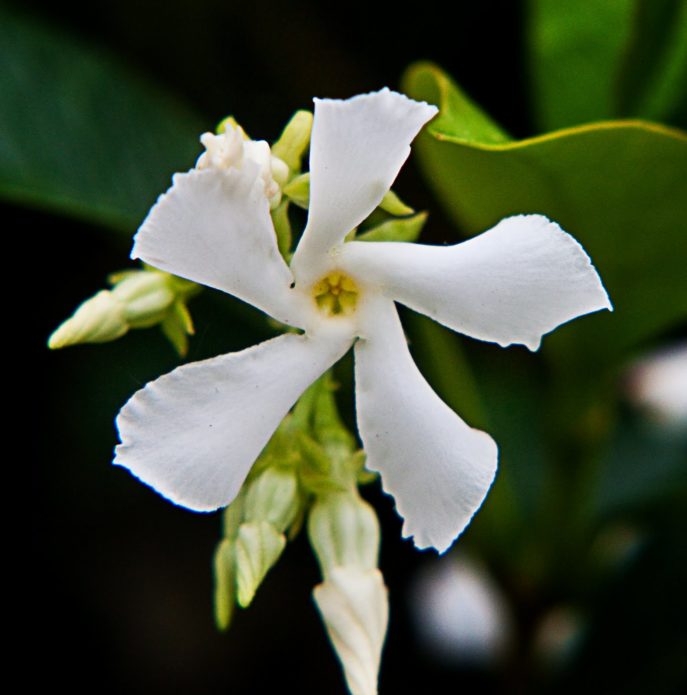 Cuttings. Cuttings are cut from an adult plant. They should be at least 12-15 cm long and have 4-6 leaves. Before planting in the ground for better rooting, cuttings are treated with "Heteroauxin" or "Kornevin". A mixture of leaf earth and sand is poured into the seedling container, into which cuttings are planted and covered with polyethylene or glass containers on top. The segments will take root for about a month and a half. At this time, caring for them consists in maintaining the temperature in the room at least + 18C and regular watering.
Cuttings. Cuttings are cut from an adult plant. They should be at least 12-15 cm long and have 4-6 leaves. Before planting in the ground for better rooting, cuttings are treated with "Heteroauxin" or "Kornevin". A mixture of leaf earth and sand is poured into the seedling container, into which cuttings are planted and covered with polyethylene or glass containers on top. The segments will take root for about a month and a half. At this time, caring for them consists in maintaining the temperature in the room at least + 18C and regular watering.- Air layering. A small pot of soil is placed near the mother plant, in which the prepared air layer will take root. To do this, a small incision is made on the lower stem of the bush, which is pressed to the ground with a wire or hairpin. The soil where the cuttings take root must be kept moist. As soon as young shoots appear in a small pot, the cuttings can be cut off.
Both the one and the other breeding method is carried out in spring and summer.
When growing indoor jasmine, it is recommended to stick to the four most important rules:
- When transplanting, be sure to pour drainage on the bottom of the pot.
- You cannot transplant jasmine into a spacious pot.
- The flower must have a rest period, so in winter it must be kept in a cool room.
- In the spring, the shrub must be cut off.
Having studied all the features of growing jasmine and the rules for caring for it, you can enjoy its company for many years. And your house will be decorated with a flowering, fragrant shrub until late autumn.
